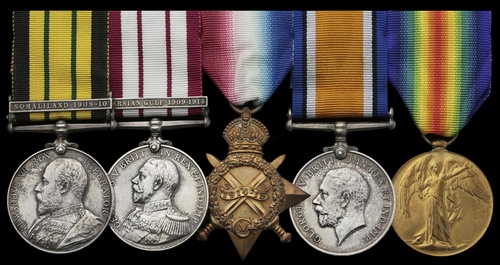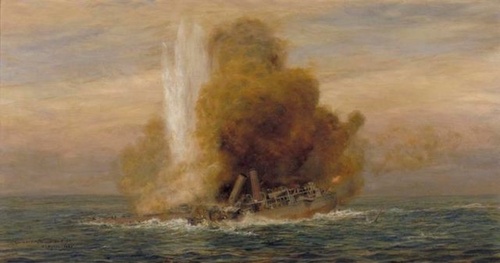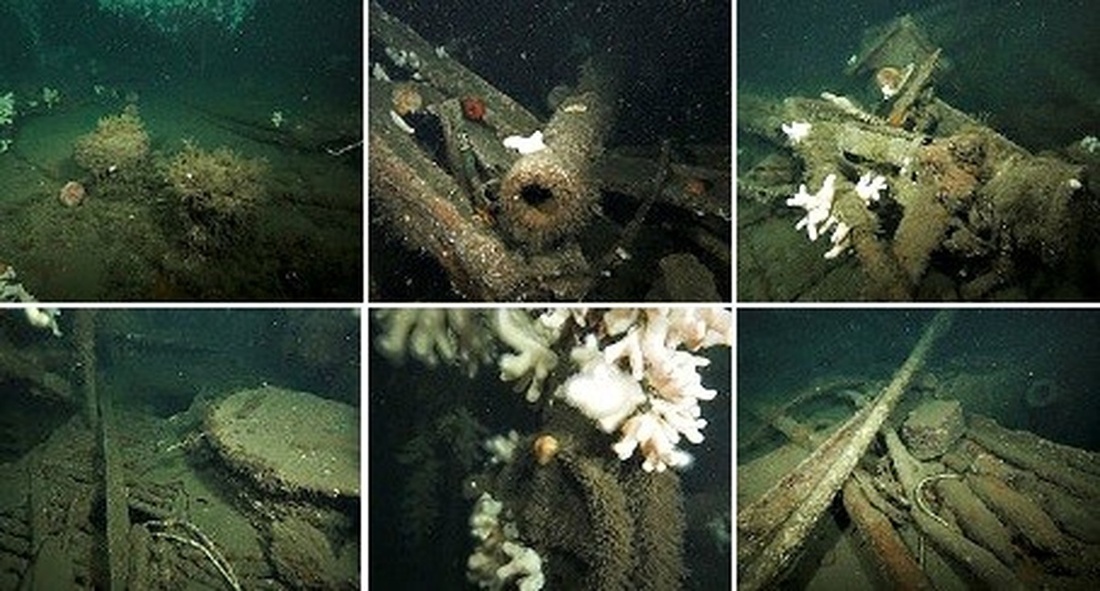Auction: 22003 - Orders, Decorations and Medals
Lot: 353
5 SEPTEMBER 1914: LOSS OF THE "PATHFINDER"
'Almost immediately after the torpedo hit, another explosion rocked the ship, this time from the forward magazine. Cordite bags, used as a propellant in the ship's artillery, had caught fire and caused a chain reaction. The cordite and shells had exploded, destroying the forward half of the ship, and sending the bow plunging into the sea at an angle of almost 45 degrees … Men jumped overboard, while others screamed in agony from burns and injury. The sea was awash with bodies, debris, soot, and blood. 2,000 yards away, a periscope sat bobbing, then slowly moved away … The sinking of the Pathfinder proved once and for all that submarines were a viable weapon of war … '
A momentous moment in the conduct of naval warfare, as recalled on the 'War History Online' website.
A poignant Great War campaign group of five awarded Ship's Steward F. E. A. Nixon, Royal Navy, a veteran of earlier active service off Somaliland and in the Persian Gulf
He was among those lost when H.M.S. Pathfinder was torpedoed by the U-21 off St. Abb's Head in the Firth of Forth on 5 September 1914, the first ship ever to be sunk by a self-propelled torpedo fired by a submarine: she blew up and sank within four minutes, taking all but of handful of her crew with her
For U-21's captain, Otto Hersing, it was a moment for celebration, his achievement gaining him the sobriquet Zerstörer der Schlachtschiffe in the German home press - the 'Destroyer of Warships': a new - terrible - age of naval warfare had indeed begun
For Aldous Huxley, author of the classic novel Brave New World, there was nothing to celebrate. Quite the contrary. He was residing near St. Abb's Head at the time of the disaster and wrote to his father, describing how wreckage and human remains from Pathfinder were strewn all over the sea, one grisly discovery being a sailor's cap still attached to half of its owner's head
Africa General Service 1902-56, 1 clasp, Somaliland 1908-10 (219829 F. E. A. Nixon, S.S.A., H.M.S. Philomel); Naval General Service 1915-62, 1 clasp, Persian Gulf 1909-1914 (219829 F. E. A. Nixon, Sh. Std. 2 Cl., H.M.S. Philomel); 1914-15 Star (219829 F. E. Nixon, S.S., R.N.); British War and Victory Medals (219829 F. E. A. Nixon, S.S., R.N.), very fine (5)
Francis Eugene Archer Nixon was born in Birmingham on 27 May 1884 and entered the Royal Navy as a Boy 2nd Class in March 1902. Appointed a Ship's Steward's Assistant in October 1903, he joined H.M.S. Philomel in July 1909, in which capacity he witnessed active service off the coast of Somaliland and in the Persian Gulf.
Nixon next joined the cruiser Pathfinder, aboard which ship he was advanced to Ship's Steward in November 1913. And he was likewise employed at the time of her loss off St. Abb's Head in the Firth of Forth on 5 September 1914.
Nixon left a widow, Jessie, of Malvern Road, Gillingham, Kent, and a young son, John. He has no known grave and is commemorated on the Chatham Naval Memorial.
Postscript
For footage of Pathfinder's wreck, filmed in September 2008, see:
https://www.youtube.com/watch?v=qToNOwMwQHQQ
On the 100th anniversary of Pathfinder's demise, in September 2014, a series of commemorative events took place, including the laying of a wreath on her wreck by divers. See the 'War History Online' website for further details:
https://www.warhistoryonline.com/war-articles/hms-pathfinder-u-boats-first-casualty-commemorated.html
Subject to 20% VAT on Buyer’s Premium. For more information please view Terms and Conditions for Buyers.
Sold for
£800
Starting price
£450









